#Austrian State Library
Text

State Hall of the Austrian National Library by Chris Zielecki
Pixelfed | Instagram | Homepage
#state hall#austria#austrian national library#library#books#vienna#wien#fujifilm#fuji gfx 100II#fuji gfx#medium format
75 notes
·
View notes
Text
Pentiment's Complete Bibliography, with links to some hard-to-find items:
I've seen some people post screenshots of the game's bibliography, but I hadn't found a plain text version (which would be much easier to work from), so I put together a complete typed version - citation style irregularities included lol. I checked through the full list and found that only four of the forty sources can't be found easily through a search engine. One has no English translation and I'm not even close to fluent enough in German to be able to actually translate an academic article, so I can't help there. For the other three (a museum exhibit book, a master's thesis, and portions of a primary source that has not been entirely translated into English), I tracked down links to them, which are included with their entries on the list.
If you want to read one of the journal articles but can't access it due to paywalls, try out 12ft.io or the unpaywall browser extension (works on Firefox and most chromium browsers). If there's something you have interest in reading but can't track down, let me know, and I can try to help! I'm pretty good at finding things lmao
Okay, happy reading, love you bye
Beach, Alison I. Women as Scribes: Book Production and Monastic Reform in Twelfth-Century Bavaria. Cambridge Univeristy Press, 2004.
Berger, Jutta Maria. Die Geschichterder Gastfreundschaft im hochmittel alterlichen Monchtum: die Cistercienser. Akademie Verlag GmbH, 1999. [No translation found.]
Blickle, Peter. The Revolution of 1525. Translated by Thomas A. Brady, Jr. and H.C. Erik Midelfort. The Johns Hopkins University Press, 1985.
Brady, Thomas A., Jr. “Imperial Destinies: A New Biography of the Emperor Maximilian I.” The Journal of Modern History, vol 62, no. 2., 1990. pp.298-314.
Brandl, Rainer. “Art or Craft: Art and the Artist in Medieval Nuremberg.” Gothic and Renaissance Art in Nuremberg 1300-1550. The Metropolitan Museum of Art, 1986. [LINK]
Byars, Jana L., “Prostitutes and Prostitution in Late Medieval Bercelona.” Masters Theses. Western Michigan University, 1997. [LINK]
Cashion, Debra Taylor. “The Art of Nikolaus Glockendon: Imitation and Originality in the Art of Renaissance Germany.” Journal of Historians of Netherlandish Art, vol 2, no. 1-2, 2010.
de Hamel, Christopher. A History of Illuminated Manuscripts. Phaidon Press Limited, 1986.
Eco, Umberto. The Name of the Rose. Translated by William Weaver. Mariner Books, 2014.
Eco, Umberto. Baudolino. Translated by William Weaver. Mariner Books, 2003.
Fournier, Jacques. “The Inquisition Records of Jacques Fournier.” Translated by Nancy P. Stork. Jan Jose Univeristy, 2020. [LINK]
Geary, Patrick. “Humiliation of Saints.” In Saints and their cults: studies in religious sociology, folklore, and history. Edited by Stephen Wilson. Cambridge University Press, 1985. pp. 123-140
Harrington, Joel F. The Faithrul Executioner: Life and Death, Honor and Shame in the Turbulent Sixteenth Century. Farrar, Straus and Giroux, 2013.
Hertzka, Gottfired and Wighard Strehlow. Grosse Hildegard-Apotheke. Christiana-Verlag, 2017.
Hildegard von Bingen. Physica. Edited by Reiner Hildebrandt and Thomas Gloning. De Gruyter, 2010.
Julian of Norwich. Revelations of Divine Love. Translated by Barry Windeatt. Oxford Univeristy Press, 2015.
Karras, Ruth Mazo. Sexuality in Medieval Europe: Doing Unto Others. Routledge, 2017.
Kerr, Julie. Monastic Hospitality: The Benedictines in England, c.1070-c.1250. Boudell Press, 2007.
Kieckhefer, Richard. Forbidden rites: a necromancer’s manual of the fifteenth century. Sutton, 1997.
Kuemin, Beat and B. Ann Tlusty, The World of the Tavern: Public Houses in Early Modern Europe. Routledge, 2017.
Ilner, Thomas, et al. The Economy of Duerrnberg-Bei-Hallein: An Iron Age Salt-mining Center in the Austrian Alps. The Antiquaries Journal, vol 83, 2003. pp. 123-194
Lang, Benedek. Unlocked Books: Manuscripts of Learned Magic in the Medieval Libraries of Central Europe. The Pennsylvania State University Press, 2008
Lindeman, Mary. Medicine and Society in Early Modern Europe. Cambridge University Press, 2019.
Lowe, Kate. “’Representing’ Africa: Ambassadors and Princes from Christian Africa to Renaissance Italy and Portugal, 1402-1608.” Transactions of the Royal Historical Society Sixth Series, vol 17, 2007. pp. 101-128
Meyers, David. “Ritual, Confession, and Religion in Sixteenth-Century Germany.” Archiv fuer Reformationsgenshichte, vol. 89, 1998. pp. 125-143.
Murat, Zuleika. “Wall paintings through the ages: the medieval period (Italy, twelfth to fifteenth century).” Archaeological and Anthropological Sciences, vol 23, no. 191. Springer, October 2021. pp. 1-27.
Overty, Joanne Filippone. “The Cost of Doing Scribal Business: Prices of Manuscript Books in England, 1300-1483.” Book History 11, 2008. pp. 1-32.
Page, Sophie. Magic in the Cloister: Pious Motives, Illicit Interests, and Occullt Approaches to the Medieval Universe. The Pennsylvania State University Press, 2013.
Park, Katharine. “The Criminal and the Saintly Body: Autopsy and Dissectionin Renaissance Italy.” Renaissance Quarterly, vol 47, no. 1, Spring 1994. pp. 1-33.
Rebel, Hermann. Peasant Classes: The Bureaucratization of Property and Family Relations under Early Habsburg Absolutism, 1511-1636. Princeton University Press, 1983.
Rublack, Ulinka. “Pregnancy, Childbirth, and the Female Body in Early Modern Germany.” Past & Present,vol. 150, no. 1, February 1996.
Salvador, Matteo. “The Ethiopian Age of Exploration: Prester John’s Discovery of Europe, 1306-1458.” Journal of World History, vol. 21, no. 4, 2011. pp.593-627.
Sangster, Alan. “The Earliest Known Treatise on Double Entry Bookkeeping by Marino de Raphaeli.” The Accounting Historians Journal, vol. 42, no. 2, 2015. pp. 1-33.
Throop, Priscilla. Hildegarde von Bingen’s Physica: The Complete English Translation of Her Classic Work on Health and Healing. Healing Arts Press, 1998.
Usher, Abbott Payson. “The Origins of Banking: The Brimitive Bank of Deposit, 1200-1600.” The Economic History Review, vol. 4, no. 4. 1934. pp.399-428.
Waldman, Louis A. “Commissioning Art in Florence for Matthias Corvinus: The Painter and Agent Alexander Formoser and his Sons, Jacopo and Raffaello del Tedesco.” Italy and Hungary: Humanism and Art in the Early Renaissance. Edited by Peter Farbaky and Louis A. Waldman, Villa I Tatti, 2011. pp.427-501.
Wendt, Ulrich. Kultur and Jagd: ein Birschgang durch die Geschichte. G. Reimer, 1907.
Whelan, Mark. “Taxes, Wagenburgs and a Nightingale: The Imperial Abbey of Ellwangen and the Hussite Wars, 1427-1435.” The Journal of Ecclesiastical History, vol. 72, no. 4, 2021, pp.751-777.
Wiesner-Hanks, Merry E. Women and Gender in Early Modern Europe. Cambridge University Press, 2008.
Yardeni, Ada. The Book of Hebrew Script: History, Palaeography, Script Styles, Calligraphy & Design. Tyndale House Publishers, 2010.
302 notes
·
View notes
Text

I typed up the Pentiment bibliography for my own use and thought I’d share it here too. In case anyone else is fixated enough on this game to embark on some light extra-curricular reading
I haven’t searched for every one of these books but a fair few can be found via one of the following: JSTOR / archive.org / pdfdrive.com / libgen + libgen.rocks; or respective websites for the journal articles.
List below the cut!
Beach, Alison I, Women as Scribes: Book Production and Monastic Reform in Twelfth-Century Bavaria. Cambridge University Press, 2004
Berger, Jutta Maria. Die Geschichte der Gastfreundschaft im hochmittelalterlichen Mönchtum die Cistercienser. Akademie Verlag GmbH, 1999
Blickle, Peter. The Revolution of 1525. Translated by Thomas A. Brady, Jr. and H.C. Erik Midelfort. The Johns Hopkins University Press, 1985
Brady, Thomas A., Jr. “Imperial Destinies: A New Biography of the Emperor Maximilian I.” The Journal of Modern History, vol.62, no.2, 1990. pp. 298-314
Brandl, Rainer. “Art or Craft? Art and the Artist in Medieval Nuremberg.” Gothic and Renaissance Art in Nuremberg 1300-2550. The Metropolitan Museum of Art, 1986
Byars, Jana L., “Prostitutes and Prostitution in Late Medieval Barcelona.” Masters Theses. Western Michigan University, 1997
Cashion, Debra Taylor. “The Art of Nikolaus Glockendon: Imitation and Originality in the Art of Renaissance Germany.” Journal of Historians of Netherlandish Art, vol.2, no.1-2, 2010
de Hamel, Christopher. A History of Illuminated Manuscripts. Phaidon Press Limited, 1986
Eco, Umberto. The Name of the Rose. Translated by William Weaver. Mariner Books, 2014
Eco, Umberto. Baudolino. Translated by William Weave. Boston, Mariner Books, 2003
Fournier, Jacques. “The Inquisition Records of Jacques Fournier.” Translated by Nancy P. Stork, San Jose University, 2020
Geary, Patrick. “Humiliation of Saints.” In Saints and their cults: studies in religious sociology, folklore, and history. Edited by Stephen Wilson. Cambridge University Press, 1985. pp. 123-140
Harrington, Joel F. The Faithful Executioner: Life and Death, Honor and Shame in the Turbulent Sixteenth Century. Farrar, Straus and Giroux, 2013
Hertzka, Gottfied and Wighard Strehlow. Große Hildegard-Apotheke. Christiana-Verlag, 2017
Hildegard von Bingen. Physica. Edited by Reiner Hildebrandt and Thomas Gloning. De Gruyter, 2010
Julian of Norwich. Revelations of Divine Love. Translated by Barry Windeatt. Oxford University Press, 2015
Karras, Ruth Mazo. Sexuality in Medieval Europe: Doing Unto Others. Routledge, 2017
Kerr, Julie. Monastic Hospitality: The Benedictines in England, c.1070-c.1250. Boydell Press, 2007
Kieckhefer, Richard. Forbidden rites: a necromancer's manual of the fifteenth century. Sutton, 1997
Kümin, Beat and B. Ann Tlusty. The World of the Tavern: Public Houses in Early Modern Europe. Routledge, 2017
Ilner, Thomas, et al. The Economy of Dürnberg-Bei-Hallein: an Iron Age Salt-mining Centre in the Austrian Alps. The Antiquaries Journal, vol. 83, 2003. pp. 123-194
Làng, Benedek. Unlocked Books: Manuscripts of Learned Magic in the Medieval Libraries of Central Europe. The Pennsylvania State University Press, 2008
Lindeman, Mary. Medicine and Society in Early Modern Europe. Cambridge University Press, 2010
Lowe, Kate. “'Representing' Africa: Ambassadors and Princes from Christian Africa to Renaissance Italy and Portugal, 1402-1608.” Transactions of the Royal Historical Society Sixth Series, vol. 17, pp. 101-128
Meyers, David. “Ritual, Confession, and Religion in Sixteenth-Century Germany.” Archiv für Reformationsgeschichte, vol. 89, 1998. pp. 125-143
Murat, Zuleika. “Wall paintings through the ages: the medieval period (Italy, twelfth to fifteenth century).” Archaeological and Anthropological Sciences, vol. 12, no. 191. Springer, October 2021. pp. 1-27
Overty, Joanne Filippone. “The Cost of Doing Scribal Business: Prices of Manuscript Books in England, 1300-1483.” Book History 11, 2008. pp. 1-32
Page, Sophie. Magic in the Cloister: Pious Motives, Illicit Interests and Occult Approaches to the Medieval Universe. The Pennsylvania State University Press, 2013
Park, Katharine. “The Criminal and the Saintly Body: Autopsy and Dissection in Renaissance Italy.” Renaissance Quarterly, vol. 47, no. 1, Spring 1994. pp. 1-33
Rebel, Hermann. Peasant Classes: The Bureaucratization of Property and Family Relations under Early Habsburg Absolutism, 1511-1636. Princeton University Press, 1983
Rublack, Ulinka. “Pregnancy, Childbirth, and the Female Body in Early Modern Germany.” Past & Present, vol. 150, no. 1, February 1996. pp. 84-110
Salvadore, Matteo. “The Ethiopian Age of Exploration: Prester John's Discovery of Europe, 1306-1458.” Journal of World History, vol. 21, no. 4, 2011. pp. 593 - 627
Sangster, Alan. “The Earliest Known Treatise on Double Entry Bookkeeping by Marino de Raphaeli”. The Accounting Historians Journal, vol. 42, no. 2, 2015. pp. 1-33.
Throop, Priscilla. Hildegard von Bingen's Physica: The Complete English Translation of Her Classic Work on Health and Healing. Healing Arts Press, 1998
Usher, Abbott Payson. “The Origins of Banking: The Primitive Bank of Deposit, 1200-1600.” The Economic History Review, vol. 4, no. 4, 1934. pp. 399-428
Waldman, Louis A. “Commissioning Art in Florence for Matthias Corvinus: The Painter and Agent Alexander Formoser and his Sons, Jacopo and Raffaello del Tedesco.” Italy and Hungary: Humanism and Art in the Early Renaissance. Edited by Péter Farbaky and Louis A. Waldman, Villa I Tatti, 2011. pp. 427-501
Wendt, Ulrich. Kultur und Jagd: ein Birschgang durch die Geschichte. G. Reimer, 1907
Whelan, Mark. “Taxes, Wagenburgs and a Nightingale: The Imperial Abbey of Ellwangen and the Hussite Wars, 1427-1435.” The Journal of Ecclesiastical History, vol. 72, no. 4, 2021, pp. 751-777.e
Wiesner-Hanks, Merry E. Women and Gender in Early Modern Europe. Cambridge University Press, 2008
Yardeni, Ada. The Book of Hebrew Script: History, Paleography, Script Styles, Calligraphy & Design. Tyndale House Publishers, 2010
#pentiment#Pentiment bibliography#some of these books give me strong first-year undergrad vibes#even just seeing ulinka rublack’s name gives me semi-traumatic flashbacks to cultural history seminars#would I cope better with it now that I don’t have to write essays each week on the topic?#¯\_ (ツ)_/¯#probs not tbh#also it probably would have been a lot faster if I could have pulled this list from game files somehow#but I do not know how to do that :)))#Anyway I hope this is of use to somebody at some point#I wish you all a very happy reading about the primitive deposit banking system everybody 😌
760 notes
·
View notes
Text
If you purchased any Discovery shows from the PlayStation Store, Sony has some bad news for you to discover.
The company recently announced that all Discovery content purchased on the PlayStation Store will be erased before 2024. The brief notice, signed by the PlayStation Store, says:
As of 31 December 2023, due to our content licensing arrangements with content providers, you will no longer be able to watch any of your previously purchased Discovery content and the content will be removed from your video library.
We sincerely thank you for your continued support.
PlayStation Network started selling TV shows and movies with 2008's PlayStation 3, and at the time you were allowed to transfer content to different Sony devices, Kotaku noted. That feature went away with the PlayStation 4. With the growth of streaming TV apps, many of which could be accessed through a PlayStation, the PlayStation Store stopped selling movies and TV shows in 2021.
But there were users who had already purchased stuff from the PlayStation Store and, believe it or not, expect to be able to watch it when they want, since they paid money to buy (rather than rent) it. I admit that I haven't heard a lot of the shows being deleted post-purchase. Shows getting axed from user libraries include Wives With Knives, An Idiot Abroad, Evil Twins, and Body Bizarre. And when it came to deadly docuseries, PlayStation Store offered plenty, whether you were after Deadly Affairs, Demands, Dentists, Devotion, Sins, or, of course, Women.
[...]
Sony's announcement is another painful reminder of the "licensing arrangements" between digital media shoppers and online stores. Some online stores display distinct purchase buttons with phrasing like "rent" versus "own," but users don't actually own this purchased content. And online stores and streaming services can remove media from unsuspecting "owners" at any time.
As stated in the terms of service for PlayStation Network (under which the PlayStation Store falls), "all Content provided through PSN is licensed on a non-exclusive and revocable basis." Similarly, PlayStation's software product license agreement states that "software is licensed to you, not sold."
This practice has become common outside of Sony, including from streaming services like Amazon Prime Video (which saw a class-action complaint against it about revoked content dismissed [PDF] in 2022) and eBooks. In 2022, Sony also deleted purchased media from German and Austrian customers' libraries. At the time, it also blamed licensing agreements.
The realization has forced people to more deeply scrutinize their digital media purchases and subscriptions and how they value digital content.
It's also leading to calls for investment in hard copies of media. As Forbes pointed out, during a November screening of Oppenheimer, director Christopher Nolan gushed about the film's Blu-ray, calling it a version of the film that people "can buy and own at home and put on a shelf so no evil streaming service can come steal it from you."
57 notes
·
View notes
Text
The 19th century Austrian socialist Ferdinand Kronawetter once remarked, "Antisemitism is the socialism of idiots." He was not wrong, but I believe even he would have been surprised that most of these idiots are either celebrities or attend the West's most prestigious educational institutions.
From Greta Thunberg to Harvard yard, you can barely throw a stone without hitting someone holding an anti-Israel rally. Apparently, we also have normalized Jewish students needing to be locked up in university libraries for their own "safety," or the BBC regularly publishing blood libels, first about a supposed bombardment of a hospital in Gaza by Israeli forces, and a few weeks later with the claim that Israeli Defence Forces are intentionally targeting medical personnel and Arabic speakers.
But even that is, in fact, old news: In January 2009, the French public broadcaster France-2 aired footage of Palestinians killed in an Israeli air raid on New Year's Day. As it turned out, however, the recording was from 2005 and not 2009, and the victims were not killed by the IDF but an "accident" of Hamas explosives detonating prematurely. And on it goes: Recently, pictures showing the carnage inflicted on the Syrian people by the Assad regime made the rounds claiming to show destruction in Gaza.
Who needs the "The Protocols of the Elders of Zion" when you have the mainstream media?
Sometimes it seems as if no ideology evolves as quickly as antisemitism: Before Israel, the Jews where hated for being rootless and without national allegiances. Now that they have a state, they are hated for that. And if the last Jew were to leave the Middle East tomorrow, some other reason would be found to justify Jew-hatred.
In fact, after 1948, Jews had to leave most of the Middle East and North Africa: Once thriving communities from Morocco to Iraq ceased to exist after the regimes of these countries drove out their Jewish populations. Many of them moved to Israel, the only state in the region that actually allows Muslim Arabs and Jews to live side-by-side.
Alas, if you are Jewish, it is never enough: Unless all of the Middle East is "Judenfrei," the Jews will always be painted as oppressors and everyone else as oppressed.
So in some ways, it's not surprising to see antisemitism thrive in the ranks of the global leftist elite. When global climate celebrity Greta Thunberg blabberers on about "no climate justice on occupied land," she is only revealing the next iteration of Jew hate. It turns out that for the "environmental movement," the solution to the "Jewish Question" seems to be more important than addressing climate change.
Similarly, in the famously tolerant Netherlands where government advisors are openly pushing for the normalization of paedophilia, the line needs to be drawn somewhere: Several filmmakers pulled out of the International Documentary Festival in Amsterdam after the organizers refused to allow their stage to be used for promoting the eradication of Israel.
Pot, porn, and paedophilia are all a go for the Dutch, but being pro-Israel? One should be careful not to go too far!
Another turn-of-the-century Austrian who would have a lot to say about this would probably be Sigmund Freud: If the West is suffering from the pathologies of historical guilt for all the alleged sins of its past, Israel and the Jews are the favourite object of projection. If the Jews are as bad as the Nazis and European colonialists, then opposing them is like re-running history, but this time those Westerners on college campuses can finally be on the side of the oppressed.
Both Israel and the Palestinians are just extras in an exercise of excessive narcissism that allows one to stand "on the right side of history" and virtue signal at no cost. Of course, this doesn't apply when Arabs are slaughtering Arabs. There were no protests for the peoples of Syria or Yemen or when ISIS was committing an actual genocide against the Yazidis.
That's what this all comes down to: a rewriting of history so that the Jews' oppressors can absolve themselves of guilt and claim to be the oppressed. During the Holocaust, the Jews experienced the worst that men can do to their fellow man, and many in the West are itching for the opportunity to find historic salvation in creating a moral equivalence between the Nazis and the state of Israel.
Neither Greta Thunberg nor her acolytes have any clue about Middle Eastern or Jewish history, because it is not about that—just as her climate activism was never about climate, but the usual Leftist tropes from colonialism to social justice.
In 1968, Eric Hoffer wrote about a premonition that would not leave him: "As it goes with Israel, so will it go with all of us. Should Israel perish, the Holocaust will be upon us." After all we have seen in recent weeks in in Western capitals and college campuses, I am afraid that he was right.
13 notes
·
View notes
Note
Do you have anymore info on Elisabeth's hofdame Helene of Thurn and Taxis? If I google her, I only get Helene in Bavaria, Sisi's sister, but she married into the Thurn and Taxis family in 1858 when the other Helene supposedly began to serve (*cough* what a conincidence). But I also can't find that Helene among the sisters-in-law, so I am curious who she is.
Very little, but yes. The problem with this lady, as you noticed, is that she often gets mixed up with Elisabeth's sister, but they were two completely different people (even the Austrian National Library has a picture of this Princess Helene identified as Helene in Bavaria).

Princess Helene of Thurn und Taxis, by Ludwig Angerer, circa 1865 (Wien Museum).
Marie Helene Sophie was born in 1836 as the third child and second daughter of Prince Friedrich Hannibal of Thurn und Taxis and his wife Countess Maria Antonia Aurora Batthyány. The Thurn und Taxis family was huge, Helene belonged to the Bohemian branch funded in the late 18th century, so she was only distantly related to Nené's husband (they were like third cousins). We know little to nothing about her life, only that she served Elisabeth as a hofdame since 1858 until her marriage to Count Wolgang Kinsky in 1871. She probably got her position because her father, who died in 1857, had been the empress' Oberhofmeister (nepo baby). She was part of the retinue that accompanied the Empress to Madeira and Corfu in 1860-1861, and was one of the ladies in this "scandalous" photo taken in Madeira:

Helene is the lady sitting in the left corner, standing behind her is Lily Hunyady, sitting next is Elisabeth, and besides her is Mathilde Windisch-Graetz (via ÖNB).
Now you may be wondering, what's so scandalous about this picture? Well, that people at this time thought that Elisabeth was literally dying. When she left Vienna her illness was considered so grave that it was believed she wouldn't survive. And then this photo pops out: the dying empress happily playing an ukelele, enjoying the fresh air with her ladies. Wasn't she sick? Why does she look like she's just having some nice vacations? Suddenly the trip to Madeira looked less like a journey for health issues and more like a flight from Vienna.
Historian Egon Corti quoted in his biography of the empress some of the letters Helene wrote when they finally returned to Vienna, and they paint an interesting portrait of the state of the imperial couple when they reunited (Corti doesn't date this letter):
Now we have her back in this country, just as we had two years ago; yet how many things lie between — Madeira, Corfu, and a world of troubles. . . . She [Empress Elisabeth] was received with an enthusiasm such as I had never heard before in Vienna. On Sunday there is to be a choir festival [Liedertafel] and a torchlight procession at which fourteen thousand people have expressed their intention of being present. His [Emperor Franz Josef] expression as he helped her out of the carriage I shall never forget. I find her looking blooming, but her expression is not natural, it is as forced and nervous as it can be, her color so high that she looks overheated, and though her face is no longer swollen, it is much thickened and changed. The fact that Prince Karl Theodor [Elisabeth's brother] accompanied her proves how much she dreads being alone with him and all of us...
Another letter Helene wrote from the Schönbrunn on September 15, 1862:
She does not seem at all anxious to let us attend her now (...) She walks and drives out a great deal with His Majesty, but when he is not here she stays alone here in the part of the garden at Reichenau which is closed to the public. However, God be praised, she is at any rate at home, and inclined to remain here ; that is the main thing. She is very nice to him — before us, at least — talkative and natural, though alla camera there may be many differences of opinion — that is often plainly to be seen. She looks splendidly, quite a different woman, with a good color, strong and brown; she eats properly, sleeps well, does not tight-lace any more, and can walk for hours, but when she stands there is a vein in her left foot which throbs. The Queen of Naples [Elisabeth's sister] does not look well — that household seems to be going badly.
A bit of a side note, but allegedly Queen Marie of Naples was pregnant with an illegitimate child at this time, and gave birth only a month later. Now I wonder, wouldn't they have noticed if she was eight months pregnant? Like is it even physically possible to cover up that with a corset?
Continuing with her letters, the last one Corti quotes is this one she wrote to Countess Caroline Wimpffen, née Countess Lamberg, who married in 1860 and therefore left service before the trip to Madeira:
I can only congratulate you upon not having had to go through these two years of martyrdom with us. Now we are settled in Schönbrunn, and the thought that we are ‘settled for good somewhere’ [in English in the original] seems quite strange. It was hard for her to give up her recent traveling about, and I quite understand this. When one has no inward peace, one imagines that it makes life easier to move about, and she has now grown too much accustomed to this. For the rest, Helene [Elisabeth’s sister] is coming here for a fortnight while the Emperor is away hunting, for he will not give that up... She still exerts a calming influence, for she is so sensible and orderly herself and tells her the truth. She [Elisabeth] went out riding at Reichenau, and has done so here once at seven in the morning, alone with Holmes. The walk has naturally become a gallop, but she does not want to trot yet. She simply refuses to let herself be accompanied by Grünne [former First General Adjuntant, now Master of the Horses] and Königsegg [Elisabeth's Oberhofmeister]. The former has been entirely ignored and avoided so far. Otherwise, thank God, things are going on well... I believe, indeed, that she has moments of despair, but nobody can laugh like her, or has such childlike whims. She says herself that it is not unpleasant to her to see us occasionally, but it is odious to her to have us in waiting...
We have, however, one last letter, this one quoted by author Joan Haslip in her biography The Lonely Empress. Helene wrote it to archduchess Valerie's former British governess Mary Throckmorton, whom she had befriended during her time at the Viennese court:
This year brings good news. Our beloved Empress has graciously condescended to appear once more at a great rout at the Burg. Although in deep mourning, everybody tells me that she looked as grand and gracious as ever, and had a kind word for everyone of the numerous people who were presented to her. Her face, though still handsome, tells of the pain and sorrow she has gone through, and the sadness in her eyes brought tears into those of all who were present. One is so thankful for the great effort she imposed on herself.
As always Haslip doesn't cite her source however in the foreword she thanks Sir Robert Throckmorton for giving her access to Mary's unpublished letters and journals, so I assume that is where she got this letter from. She doesn't date it but it's from the 1890s.
Helene died in 1901, aged 65-years-old, of what I couldn't find. She had outlived her husband by almost sixteen years.
Sources:
Corti, Egon Conte (1936). Elizabeth, empress of Austria
Haslip, Joan (1965). The Lonely Empress: a biography of Elizabeth of Austria
Helene Prinzessin von Thurn und Taxis, on Geni
#helene of thurn und taxis countess kinsky#empress elisabeth of austria#historian: egon caesar conte corti#historian: joan haslip#asks
13 notes
·
View notes
Text
I was reading Wikipedia and...
Just found out about this BAMF
Fredrick the Great. King of Prussia.
Listen here, Old Fritz was an amazing ruler. He was more interested in music and philosophy than war.
BUT he has great experience in the art of war and was a brilliant strategist.
Guys. He believed in absolutism, that the ruler should be the first servant of the State.
Guys, It's almost certain Old Fritz was gay.
He died childless.
He lost his reputation because Hitler idolized him and he became a Nazi symbol.
Which is a damn shame because he genuinely built the foundation that allowed Prussia to contest the Austrian Hasburgs leadership.
Guys he made library of poetry.
Guys he wrote "Anti- Machiavel" because he disliked Nicolo Machiavelli's "The Prince".
Old Fritz recieved his title 'the Great' after, at 33 years old, he got Austria to sign the treaty of Breslau & Dresden giving Prussia Silesia. I'm so proud and I'm not even Prussian.
Guys Old Fritz known as the Potato king. He was so clever.
He was against animal cruelty.
He was a francophile I'm crying XD.
He died at 74.
What a guy.

That.
That says "King" right?
Oml. His signature is just King. 😭
Low-key he's my fav. I thought I loved Catherine the Great. No, I'd just never heard about Old Fritz. Still love Miss Catherine but I gotta hand it to the Potato King okay?
7 notes
·
View notes
Text
Robert & Charlotte.
In 1922 a young German woman named Charlotte Riefenstahl started studying natural sciences and mathematics in Georg-August University of Göttingen after two years of teaching in a private school in Lauenförde, Charlotte was a bright young woman often referred to by her peers as the most attractive woman on campus. On the 20th of November 1927 at the age of 28, she obtained her PhD under Gustav Tammann Thesis about the rolling process and recrystallization of silver and gold. The change in electrical resistance in the self-hardening lead-mercury and lead-sodium alloys.
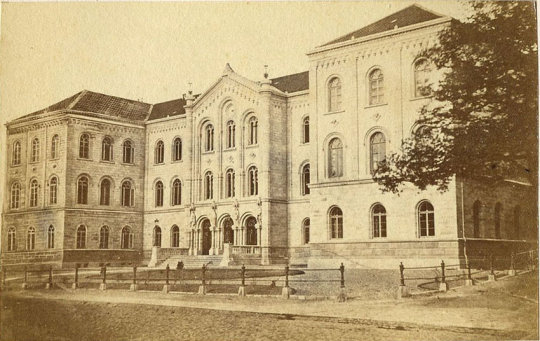
University of Göttingen.
That same year she met Robert, they had met on a student overnight trip to Hamburg standing at a train platform Charlotte noticed a unique beautiful suitcase made of pigskin not the usual cardboard cheap suitcases that you would normally come across, She pointed at the suitcase saying “What a beautiful thing, whose is it?” to which Professor Franck replied “Who else but Oppenheimer’s” he shrugged. Charlotte then got on the train back to Göttingen asking where this Oppenheimer was she then sat down beside him clearly interested to know more about the man with the beautiful suitcase, on the train Robert was sitting down reading a novel by the French author André Gide known for (the counterfeiters) Charlotte aware of the author began to speak to Robert about his work, Robert was impressed this woman knew about the work of André Gide he sat with her talking about the author throughout the train ride back to Göttingen, as they arrived to their destination Charlotte complimented his luggage and expressed how she admired how nice the bag was.

A pigskin suitcase from the 1920s similar to the description of Robert's.
Later, speaking to another student about her encounter with Robert, they predicted that Robert would try to give over this suitcase of his to her as Robert was known for giving away his possessions to anyone who admired them, Robert was very smitten with Riefenstahl he tried to court her the best he could but so did Friedrich Georg “fritz" Houtermans a Dutch-Austrian-German 24 year old, A fellow physics student who had already made a name for himself writing a paper on the energy production of stars, Houtermans was known for his quite self-assured attitude being the son of a Dutch banker and would make cocky comments like “When your ancestors were still living in trees, mine were already forging checks!” both Robert and Friedrich received their doctorates that year in 1927.

Friedrich Georg Houtermans 1927 at the University of Göttingen.
At the end of Robert’s year at Göttingen University Charlotte came to say her goodbyes at his leaving party, Robert as the student that conversed with Charlotte earlier that year predicted made a point by giving her his pigskin bag which Riefenstahl kept for the next 3 decades calling it “the Oppenheimer”

Max Born (seated) at his home in Göttingen. Paul Dirac is in the front row, second from right. Yoshikatsu Sugiura is sitting to the right of Born on the ground. J. Robert Oppenheimer is third from left. 1927. (Image courtesy of Florida State University Library)
Later when Robert was back in the states he had word that miss Riefenstahl had accepted a teaching post at Vassar College, pleased in September he went to the dockside to meet her she was accompanied by fellow physicists Samuel Goudsmit and George Uhlenbeck and Uhlenbeck's new wife, Samuel recalled “We all got the real Oppenheimer treatment—but it was for Charlottes benefit really. He met us in this great chauffeur-driven limousine, and took us downtown to a hotel he had selected in Greenwich Village.”

George Uhlenbeck, Hendrik Kramers and Samuel Goudsmit. circa 1928 at the University of Michigan.
Robert was infatuated with Charlotte taking her around New York and all different places he had been such as art galleries to taking her on dates to the most expensive restaurants, he even went to the extent of introducing her to his parents showing how committed he was to her however although Charlotte admired his attention and care he gave to her she also felt that Robert was emotionally unavailable, When she asked about his past he would often dismiss any attempts to talk about it, She also felt that the Oppenheimer household was too “overprotective” unfortunately their love affair didn’t last and they drifted apart, Later Charlotte would leave her job at Vassar returning home to Göttingen in 1930 and she would marry Roberts former classmate Friedrich Georg Houtermans in August of 1931 with Wolfgang Pauli a Austrian-born Theoretical physicist and Rudolf Peierls a German-born physicist (A future key player in Tube alloys as well as the Manhattan Project) being witnesses to the ceremony, they later went on to have two children Giovanna and Jan.

Friedrich, Charlotte and Giovanna in Berlin, 1932.
#j robert oppenheimer#oppenheimer#oppie#american prometheus#los alamos#robert oppenheimer#wolfgang Pauli#Rudolf Peierls#Friedrich Georg Houtermans#Charlotte riefenstahl#houtermans#physics#George Uhlenbeck#Samuel Goudsmit#history
5 notes
·
View notes
Text
ALL ABOUT CHUT
Hey, birdies! This is for you, so you can get to crow me better! Ha-ha!
Full legal name: Chutty Qwuiquie Slutovich
Home address: Tumblebook Library, North Plotly Street
Relationship status: Happily married to my main crow @crowyscornerxx
State of wellness: Unrelenting
Favorite type of animal: The North Austrian ground snail (Hemetomaphosphaticlitoris)
Home country: France, Russia, Chad, the United States of America, Latvia, Czech Republic, Slovakia, the Mongol Empire, Uzbekistan
Favorite holiday: St. Petersburg
Politics: Opinions of laws and the administration
Favorite past job: Assistant to Genghis Khan
Favorite flavor: Chartreuse
FAQ
Q: Hey, Chutty! Have you ever traveled outside the country?
A: No!
Q: Do you have some marijuana I can borrow?
A: Sorry, all out of stock!
Q: How is Genghis Khan doing nowadays?
A: Swimmingly!
#emo#poetry#crows#gay#soundcloud#crowboy arg#arg#alternate reality game#stream crowboy on soundcloud#stream j1ss 4nd th3 m34t by clint on the crowboy soundcloud#mongol empire#genghis khan#france#russian#taylor swift#the bite of 87#the chutness#chutty qwiquie slutovich#chut#crow boy#crowboy#crowy fergus crackletink#faq#faq page#faqr#faq post#rules and faq#frequently asked questions
3 notes
·
View notes
Text

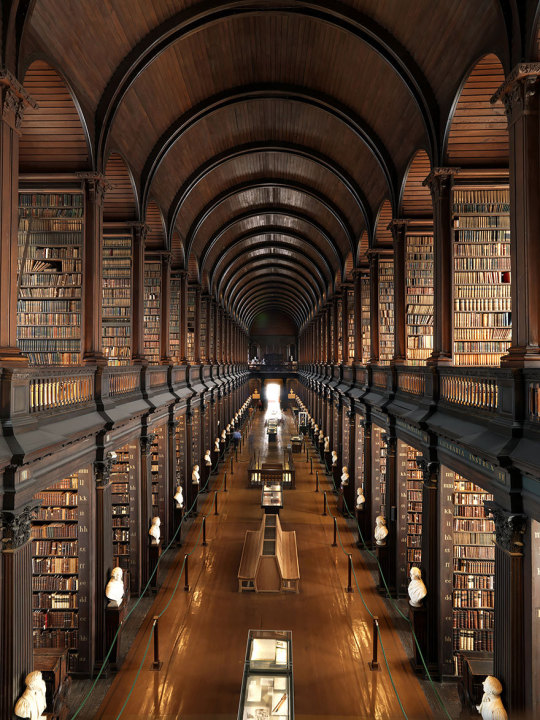
25 Most Beautiful Libraries in the World
For travelers who love books and reading, there’s no place more enchanting than a big, beautiful library. Being surrounded by thousands of books is a dream for many, but there are some libraries that take things to the next level with their jaw-dropping interiors. These are the kinds of places that act like shrines to the written word, whether they are steeped in centuries of history or are the cutting edge of modern design.
To help you add to your bucketlist, we’ve compiled this list of the most beautiful libraries in the world, many of which could vie for the title of the world’s best library.
The Library of the Benedictine Monastery in Admont, Austria
Admont Abbey Library in Admont, Austria
There’s little doubt that one of the best libraries in the world is the glamorous Admont Abbey Library of Austria. Full of exquisite frescoes set within Baroque architecture, you only need to take one look at this library to see what makes it special. Pristinely decorated in white and gold, this Austrian library dates back to 1776, although the monastery itself is considerably older. Besides its grandeur, Admont Abbey also holds the title of largest monastery library in the world, containing around 70,000 volumes. One detail that’s tough to miss is the series of frescoes by Bartolomeo Altomonte that cover each of the library’s seven cupolas.
Bookshelf inside Peabody Library a research library for John Hopkins University in Baltimore, USA
George Peabody Library in Baltimore, Maryland, USA
At a glance, one could easily mistake the George Peabody Library of Baltimore, Maryland, for a luxury hotel or venue. That should give you an idea of what kind of glamor we’re talking about with this library at Johns Hopkins University. Gazing up from its elegant marble floor past five tiers of balconies to its expansive skylights, it’s hard to believe this is a research-focused academic library and not something far more extravagant.
Interestingly, this library was funded in 1878 by philanthropist George Peabody as a resource open to the public. Today it houses nearly 300,000 volumes, earning it the nickname of “the Cathedral of Books” in Baltimore.
Library of the Mafra National Palace in Portugal
Mafra Palace Library in Mafra, Portugal
It seems incredible that the Mafra Palace Library is said to be the highlight of a visit to this Portuguese palace. After all, we’re talking about quite an immense and stately royal palace with centuries of history behind it. But when it houses a Rococo masterpiece like the Mafra Palace Library, with marble floors, an intricate ceiling, and books on ornate shelves lining its 88-meter-long hall, that’s absolutely the case. The library in Mafra dates from 1755, but the collection spans from the 14th to 19th centuries and even includes some volumes that were added only by special permission from the Pope, due to their “forbidden” nature.
The Long Room in the Old Library at Trinity College Dublin.
Trinity College Library in Dublin, Ireland
A beautiful library that really needs no introduction is the ever-popular Trinity College Library at the university in Dublin. One of the most famous libraries in the world, Trinity College Library is a classic Dublin tourist attraction, with crowds from all over the world visiting to see the stacked shelves of its iconic Long Room. The most impressive building of the library is the Old Library, where the Long Room is found, which dates back to 1592.
Beyond its gorgeous wooden architecture and arched ceiling, what makes the library so important is its vast collection, including the historic Book of Kells and a copy of the 1916 Proclamation of the Irish Republic, not to mention the incredibly symbolic Brian Boru harp.
Abbey Library Saint Gall in Austria
Abbey Library of Saint Gall in St. Gallen, Switzerland
Although St. Gallen may not be one of the better-known towns in Switzerland, it hides a pretty major attraction overlooked by many. This underestimated feature is the UNESCO heritage-listed Abbey Library of Saint Gall, a worthy contender for the title of world’s most beautiful library.
The Abbey Library of Saint Gall originated in 719 AD, and among its considerable archives lie thousands of books and manuscripts from the Middle Ages. But it’s really the striking carved woodwork and sublime Rococo ceiling that will make you fall in love with this library.
Royal Portuguese Reading Room in Rio de Janeiro, Brazil
T photography / shutterstock.com
Royal Portuguese Reading Room in Rio de Janeiro, Brazil
Few associate South America with enchanting libraries, and that’s part of what makes the Royal Portuguese Reading Room of Rio such a delightful surprise. Built in 1837 to store the largest collection of Portuguese literature outside of Portugal, it seems to have also adopted the Portuguese love of captivating libraries as well. Step into the main reading room of the Royal Portuguese Cabinet of Reading and you’re sure to be overwhelmed by the dark woodwork and golden detail of its three stories of bookcases, not to mention the chandelier and stained-glass ceiling overhead.
National Library of the Girolamini Oratory in Naples, Italy
The National Library of the Girolamini Oratory made headlines in 2013, although not for its rich interior or its status as one of the oldest libraries in Italy. Reports stated that the then-director and accomplices had looted the library, but fortunately most of the missing volumes were recovered following the arrests of the culprits. However, the news did rekindle a well-deserved interest in the 16th-century library. Rooms and halls inside the Biblioteca Girolamini vary in look, from modest rooms completely lined with historic wooden shelves to sublime chambers bearing magnificent fresco ceilings.
Aerial view of main floor of the public Central Library in Seattle, USA
Andriy Blokhin / shutterstock.com
Seattle Central Library in Seattle, Washington, USA
While there are plenty of historic libraries that are beautiful, it’s possible to find beauty in modern ones as well, as the Seattle Central Library proves. Easily one of the coolest libraries in the world, the Seattle Central Library opened in 2004 in the city’s downtown area with a hyper-modern design. Still eye-catching today, the building is made of steel and glass, with an abstract design that’s just as interesting from the inside as the outside. The diamond-shaped lattice that wraps around its box-like design lets in lots of light, creating an open, fresh, and inviting feel uncommon with most libraries.
Interior of new public library in Stuttgart, Germany
Sasa Komlen / shutterstock.com
Stuttgart City Library in Stuttgart, Germany
It’s difficult to imagine a more bright and contemporary public library than the Stuttgart City Library in Germany. In fact, since reopening in its new location in 2011, it’d be fair to say that this Stuttgart institution is a true contender for the distinction of best public library in the world.
The cube-like exterior of the library has drawn some strong public responses, but few could argue with the gleaming, minimalist main foyer of the library and its large central skylight. Some might even see in the library’s geometric heart a reminiscence of the incredible, dizzyingly patterned stepwells found in India.
4 notes
·
View notes
Text
Fwd: PostDoc: ViennaU.PopulationGenomics
Begin forwarded message:
> From: [email protected]
> Subject: PostDoc: ViennaU.PopulationGenomics
> Date: 23 March 2024 at 04:12:08 GMT
> To: [email protected]
>
>
>
>
> Postdoc Position in Population Genomics, University of Vienna, Austria
> (f/m/d)
>
> THE POSITION:
> One-year Austrian Science Fund (FWF) funded Postdoc position with
> possibility of extension is available at a genomic research group led by
> Elmira Mohandesan, PhD at University of Vienna, Austria. In this project
> we aim to use New Zealand feral horse population as a a natural, on-going
> laboratory to investigate the effects of founder events and conservation
> strategies on genetic diversity and inbreeding in natural and managed
> populations. To this end, it is planned to whole genome shotgun sequence a
> large number of feral horses from the Kaimanawa ranges. The obtained data
> will be analysed using state-of- the-art population genetic approaches.
>
> YOUR TASKS:
> * Basic wet-lab experiments (DNA extraction, Illumina library
> preparation, Quality Control, etc.).
> * Population genetic analysis, to examine signature of selection,
> candidate genes selection, mutational loads, and conservation
> management modeling.
> * Documentation of data generation, and analysis procedure.
> * Administration, and organisation of the generated data according to
> the Research Data Management (RDM) policy at the University of Vienna
> (https://ift.tt/NMDTjKi).
> * Active participation in lab meetings, seminars, and journal clubs.
>
> YOUR PROFILE:
> * Background in evolutionary genetics, molecular biology, population
> genetics, and/or bioinformatics.
> * Bioinformatics skills (e.g., Unix, R, Python) and expertise in NGS
> data is required.
> * Proficiency in written and spoken English is required.
> * Ability to work independently, and efficiently within a multi-
> disciplinary research environment.
> * Proactive and self-motivated personality.
>
> WE OFFER:
> * A one-year funded Postdoc position remunerated according to the FWF
> personnel costs (gross salary 4.752,30 ?? per month.
> * A diverse and supportive team in an inspiring, and international
> setting at the Department of Evolutionary Anthropology
> (https://ift.tt/Lsn8PzB).
> * In-person scientific seminars by the invited renowned scientists
> around the world organized through the HEAS platform
> (https://www.heas.at/).
> * Access to cutting-edge scientific infrastructure and computational
> resources through CUBE platform (https://ift.tt/xGM1ea4).
> * Living in Austria??s capital city Vienna, located in the heart of
> Europe and ranks as one of the most attractive cities worldwide.
>
> HOW TO APPLY:
> Please send your application (CV, motivation letter), and names/contact
> information of two potential referees to Elmira Mohandesan, PhD (E-mail:
> [email protected]) by April 15th 2024. Preferred starting
> date June 2024.
>
>
> Elmira
>
> Elmira Mohandesan, PhD
> Principal InvestigatorUniversity of ViennaDjerassiplatz 1, Room
> 5.1221030 ViennaAustria1030 ViennaAustriaPhone: 0043-1-4277-54716Email:
> [email protected]
>
> Elmira Mohandesan
1 note
·
View note
Text
What I read in 2023
That post about my fave 2023 movies and TV shows made me want to do a similar post about the books (and stories etc.) I've read in 2023!
I'm not usually too keen on sharing my reads because it takes me ages to finish books, which usually results in a very low amount of pages read each year... at least compared to the amount I often see others share on Social Media. But tbh, any amount is better than reading not reading at all :)
That's also why I often tend to gravitate towards novellas, short stories and anthologies.
So yup, here are all the novels, stories and non-fiction works I read in 2023.



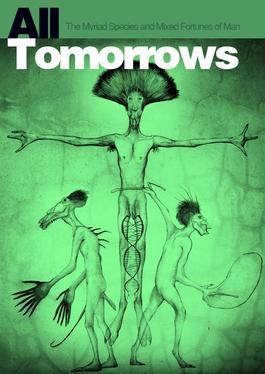
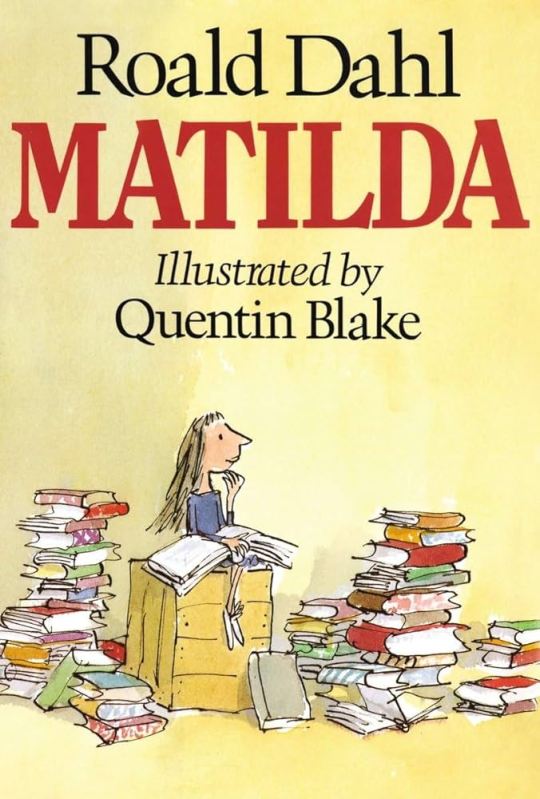

And then I woke up by Malcolm Devlin: My girlfriend gifted me this one and I read it within a single day (which is quite rare for me) while we were on a train ride to Berlin. It's the best book I've been gifted in a while: perfect length, perfect style, intriguing subject matter, deep characters. Devlin uses tropes from Zombie shows and other post-apocalyptic media to address the much larger topic of radicalization in the 21st century and I love with how much humanity + understanding he went about this.
Good Omens by Neil Gaiman and Terry Pratchett: This one's been going on for a while, fellas. Literally started reading it during my trip to the States in summer 2019 but due to already having seen the show, I never really felt like finishing the novel in one go. But I think that also reveals a lot about how entertaining I found the novel. It was good and I def get the hype surrounding it but the style wasn't as much to my liking as I hoped it would be.
Damals war es Friedrich by Hans Peter Richter: I read this one for work. The other German teachers at the school I worked at in 2022/23 all chose to read this one with their students so I went along with it. It's about two young boys who grow up as neighbors in Germany before and during WWII. I totally see why this one is such a popular choice in schools over here, it taught some v important lessons to my students regarding the spread of fascism and antisemitism. What I liked most about it is how the novel aimed to teach its readers about Jewish culture, traditions and successes, which I haven't seen much in other "WWII media" that is frequently dealt with in Austrian schools.
Matilda by Roald Dahl: Def my most fun read of 2023! I wanted to read another book with those same students at the end of the year (after their final exam). Out of all the books in the school's library, I went with this one because I was familiar with both movie adaptations and thought that it would allow for some really fun lesson ideas. We made bingo sheets with our predictions of the story, split up the roles whenever we read chapters in class, did grammar + spelling tasks with snippets from the book, wrote a diary entry from Mathilda's POV, and wrote an email from Miss Honey's POV. After finishing the book, we watched the older movie adaptation with Danny Devito in it. It was so much fun :')
All Tomorrows - A Billion Year Chronicle of the Myriad Species and Mixed Fortunes of Man by C. M. Kosemen: This book deals with sci-fi, body horror AND is written like a historical account - love me some epistolary, always. In short, it checks off all of my favourite boxes. It tells the story of a future in which humans start colonizing space and are punished for their hubris through various procedures of genetic engineering that are enforced on them. Multiple species that once used to be human and their habitats are documented and accompanied by fascinatingly horrifying illustrations. The free PDF can be found here and there is also an abridged retelling of the book on YouTube featuring snippets of the novel and its illustrations. I've consumed and can recommend both. This work made me discover and love the biopunk genre. If anybody has recommendations that fall under similar categories, please let me know.
four essays from It Came from the Closet: "Twenty-five contemporary queer and trans writers reflect on the horror films that shaped them and shook them." So far, I've gotten around to reading "Both Ways [Jennifer's Body]" by Carmen Maria Machado, "My Hand on the Glass [Hereditary]" by Bruce Owens Grimm, "The Wolf Man's Daughter [The Wolf Man]" by Tosha R. Taylor, and "Black Body Snatchers [Get Out]" by Samuel Autman. Out of those four, "My Hand on the Glass" and "Black Body Snatchers" stuck with me the most.
My goal for 2024 is to finish the books I've already started and to read more works by female writers.
Because my reading habits are a mess, there are several books that I've started reading a while ago and have yet to finish. These include:
Nightbitch by Rachel Yoder (abt 1/5th done)
The Song of Achilles by Madeline Miller (almost finished w that one)
Fullmetal Alchemist by Hiromu Arakawa (my friends gifted me the first volume of the manga for Christmas bc the FMAB anime is one of my fave pieces of media)
#about me#book reviews#what i read#books#reading#good omens#all tomorrows#matilda#and then I woke up
1 note
·
View note
Text
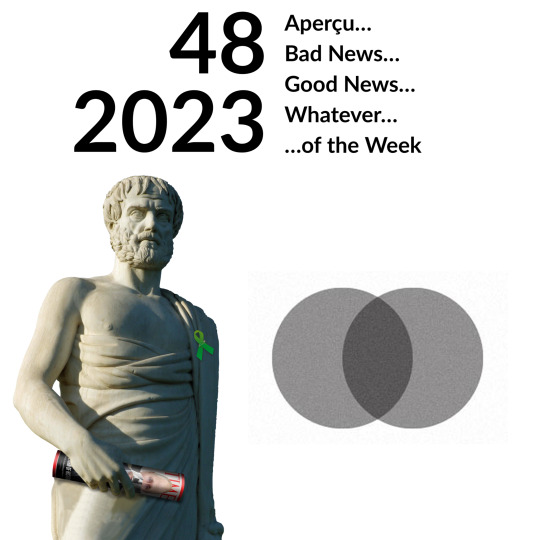
2023 / 48 - Brief compromise edition due to work overload (and belated - sorry...)
Aperçu of the Week:
"He, who has a why to live for, can bear with almost any how."
(Friedrich Nietzsche, German philologist and founder of a new philosophical school, the "philosophy of life").
Bad News of the Week:
Abuse of power in relationships is a sensitive issue. Many endure and remain silent, their number can only be guessed. And it is practically always the supposedly weaker sex that suffers. Violence against women costs Germany 148 million euros - per day. Loss of work, being forced to move away from the abusive man, the upkeep of women's shelters. Last year alone, 240,000 people in Germany suffered domestic violence, 8.5 percent more than in the previous year. And these are only the cases documented by the police. On average, a woman is killed by her partner or ex-partner every three days.
In other supposedly "civilized" countries, the situation is hardly any better, not to mention the rest - keyword Taliban. "The scale is unbearable," says Lisa Paus from the Green Party, Federal Minister for Family Affairs, Senior Citizens, Women and Youth. And then there is the dark number of unreported cases. The White Ring (an aid organization for victims of crime and their families) estimates that there could be four times more abuse than is recorded. I dare not even think about children, for whom there are hardly any reliable figures. I like to say that the most dangerous drug in the world is testosterone. And I'm afraid I'm right once again.
Good News of the Week:
Real estate prices really only know one way, at least in sought-after locations like Munich: up. Where residents are increasingly suffering from rising rents, most of the same thing is happening with office and retail space. One person who has made a killing on the real estate market in recent years is the Austrian self-made billionaire René Benko and his Signa holding. He also owns valuable buildings in city centers, such as centrally located department stores.
Now Signa-Holding has filed for insolvency, not even wunderkind Benko (he is only 46) is spared from rising construction prices and increasingly expensive loans. At the same time, the "department store" model, in which Signa is the clear market leader, appears to be becoming increasingly obsolete thanks to online retailing and increasing specialization in the sector. In many German cities, there will soon be large buildings in the middle of the city center that will lose their purpose and its financing.
Martin Schirdewan, chairman of the Left Party, is now putting forward an idea that I find very appealing. He proposes that local authorities use their often existing pre-emptive rights to secure these central properties. He calls them "urgently needed care centers". With local amenities, doctors, childcare, libraries, theaters, social counseling, etc. Town centers that offer the people what they need. In other words, real city centers that serve their residents instead of making investors richer. A great idea.
Personal happy moment of the week:
In December, there are Advent markets everywhere in Germany. Wooden hut villages decorated for Christmas in public squares, mainly offering arts and crafts, but above all food and drink - hot caipirinha, for example. I opened this year's season with friends in Munich's old town. Right at the start of winter with snow flurries, a wonderful atmosphere. Two more trips to Advent markets are already planned: one on an island in Bavaria's largest lake and one on the edge of the Alps. Nice.
I couldn't care less...
...about the political future of George Santos. The fact that the Republican impostor from Long Island has lost his seat in the US House of Representatives only goes to show that a minimum of "political hygiene" (still) works in the United States of America.
As I write this...
...I'm sitting on the train. Which is now running again. There was a total standstill for four days, as the onset of winter brought the most snow in a single day since 2006 - on that day alone I shoveled snow for four and a quarter hours. Nothing worked: roads were closed, the airport was shut, train routes were impassable. Now at least the train is running again. And I'm sitting inside in the warmth, listening to soft chill-out music and looking out of the window at a beautiful winter landscape.
Post Scriptum
Germany has won the World Cup. In Indonesia. In soccer. Against France. The U17s, young players with a maximum age of 16. We are already European champions, and now world champions. At the moment, our men's team is anything but competitive. We wouldn't even qualify for next year's European Championships in Germany if we weren't the hosts. But in a few years' time, when the youngsters have turned professional, things will obviously look different: dress warmly!
#thoughts#aperçu#good news#bad news#news of the week#happy moments#politics#nietzsche#abuse of power#women#domestic#violence#taliban#shelter#germany#real estate#rene benko#Signa#city center#department store#Advent#christmas#george santos#snow#train#world cup#soccer#championship#indonesia#house of representatives
1 note
·
View note
Text
A Holocaust library and research center in London was defaced with graffiti reading “Gaza,” the latest in a string of Jewish institutions and sites around the world that have been vandalized with pro-Palestinian slogans.
Staff at the Wiener Holocaust Library discovered the spray-painted graffiti on Thursday morning on a prominent sign affixed to a fence outside the building, which is the world’s oldest Holocaust library and research center. The center will be replacing its sign, director Toby Simpson told the Jewish News.
“To use ignorance as a weapon against an institution of learning is stupid and wrong. To lash out against Israel by targeting a Holocaust institution is an action that can only make sense to antisemites and their enablers,” Simpson said. “The proliferation of antisemitic hate in the current climate should be a matter of grave concern to us all.”
One day earlier, on Wednesday, a wall in a Jewish cemetery in Vienna was defaced with a swastika and the word “Hitler,” and someone set fire to the cemetery’s ceremonial hall, according to London’s Jewish Chronicle. Firefighters extinguished the flames. Austrian chancellor Karl Nehammer said in response to the incident, “Antisemitism has no place in our society and will be fought against by any political and legal means necessary,” he said.
On Tuesday, the Sholem Aleichem Cultural Center in New York City was graffitied with the words “Free Palestine” near the doorway. It is a Yiddish culture center in the Bronx that also rents space to Montefiore Medical Center, whose staff discovered the graffiti, according to the New York Post.
“Writing ‘Free Palestine’ or anything on a Jewish institution is an apparent attack against the Jewish community,” said Jeffrey Dinowitz, a New York State assemblymember representing the Bronx, in a statement. “Nonetheless, the act of vandalizing the Sholem Aleichem Cultural Center in the Bronx with the words ‘Free Palestine’ is not solely an expression of anti-Zionism; it has antisemitic connotations.”
0 notes
Text
June 5 2022 Lafayette and Boulder

Today at our Bouldlder Valley Unitarian Universalist Fellowship (BVUUF) Sunday service it was Flower Communion Sunday. This is one of my favorite services of the year. It was lovely to see all the flowers everyone had brought, all the different shapes and colors. It is a tradition celebrated by Unitarian Universalists around the world in honor and memory of Norbert Capek and the amazing example of the strong spirit of this great man who was killed by the Nazis during the occupation of Czechoslovakia. While the story of Norbert Capek is tragic and sad his legacy is uplifting and beautiful.

According to the Harvard Square Library:
“Norbert Fabian Čapek was born June 3, 1870 in the village of Radomysl in Bohemia (then a part of the Austro-Hungarian Empire). He was a raised as a Roman Catholic (then the dominant state-supported religion), but became a Baptist at the age of eighteen, and soon thereafter began a career as a minister, missionary, publicist, and composer of hymns. He served a congregation in Saxony for three years, then moved to Moravia, where he established a new congregation. In 1901 he was elected chair of the Union of Baptist Churches of Moravia and Slovakia. He published religious journals and became the assistant editor of a popular literary magazine. His religious stance became increasingly liberal, influenced by the “social gospel” movement of Walter Rauschenbausch and by the study of radical Christian movements in Czech religious history.

Čapek first became interested in Unitarianism in 1910, as a result of a meeting with Tomas Masaryk (then a professor, later to be President of Czechoslovakia). Čapek tried that year, without success, to get the American Unitarian Association to support his efforts to promote liberal religion.
At the beginning of World War I in 1914, Čapek moved to the United States, after being advised that he was in danger of arrest by Austrian authorities because of his nationalistic and anti-Catholic writings, Early in 1915 he was tried for heresy by a Baptist tribunal, but acquitted, and for the next three years he was pastor of the First Slovak Baptist Church in Newark. During this time he organized an alliance of the various Slovak associations in New Jersey, and was active in the movement for Czechoslovak independence.”
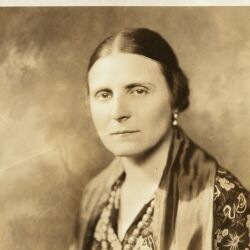
From the First Unitarian Church of Essex County website:
Maja V. Oktavec, born April 8, 1888 in Bohemia, came to the United States in 1907, obtained a degree from the Columbia University School of Library Science, and in 1909 went to work at the Webster Branch of the New York Public Library. In 1914 she was put in charge of its Czech section. There she met Norbert Čapek. They were married June 23, 1917. (Čapek had already been married and widowed twice, and had nine children.) Maja resigned her position at the library a week after their marriage. They bought a home in Belleville, and in 1919 Čapek became pastor of a small congregation there. But in September of that year, having come to the conclusion that he could no longer be a Baptist, he resigned his pastorate.”
From the Harvard Square Library:
“At the end of World War I, Czechoslovakia became independent, and many Czechs decided to leave the Roman Catholic church. Čapek was eager to return to his native land and play a part in its spiritual reawakening....He and Maja... had joined First Unitarian Church of Essex County... The minister, Dr. Walter Reid Hunt, learning of Čapek’s intent to return to Czechoslovakia, arranged for him to meet the president of the American Unitarian Association, Dr. Samuel A. Eliot. By May, Čapek had a commitment from the AUA to support his work in Czechoslovakia...He and Maja embarked for Europe June 30.”
From the First Unitarian Church of Essex County website:
“By February 1922, Čapek had organized the Prague Congregation of Liberal Religious Fellowship, and the services were soon drawing standing-room-only crowds. On June 24, 1923, the first Flower Communion was celebrated. Maja was ordained as a minister in 1926. For several years the fellowship met in rented halls. With financial help from the AUA and the British and Foreign Unitarian Association, they acquired and renovated a medieval palace. In 1930 the Unitarian Church of Czechoslovakia was officially recognized by the Czech government.
In 1939, shortly before the German occupation of Czechoslovakia, Maja Čapek left for the United States to lecture and raise funds for a joint Unitarian-Friends program to assist endangered refugees and internees.

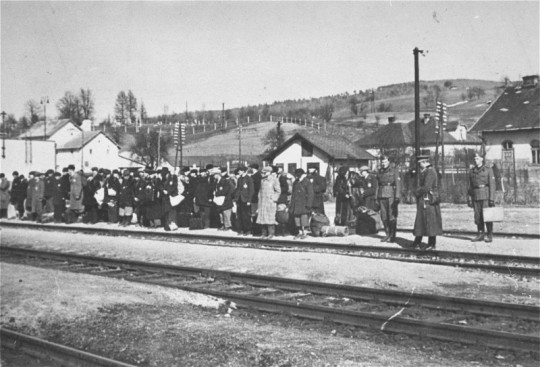
On March 28, 1941, Čapek and his youngest daughter Zora were arrested by the Gestapo. They were convicted of listening to foreign radio broadcasts. Čapek was sentenced to a year in prison, but eleven months that he had already been confined while waiting for trial were to be counted in the sentence. (Zora, who had not only listened to the broadcasts but shared notes of them with someone else, was given an eighteen-month term). In the midst of a wave of executions and deportations of Czechs by the Nazis following the assassination of Reinhard Heydrich (the German official in charge of the occupied country), a Gestapo officer overrode the court's sentence and ordered that Norbert Čapek be sent to the concentration camp at Dachau, "return unwanted." He arrived there July 5, 1942. and on October 12, 1942 was sent on an "invalid transport," and evidently killed that day with poison gas, though his official death certificate states that he died October 30 of a cerebral hemorrhage.
Maja Čapek did not learn of Norbert's death until after the war. After her lecture tour, she served as a minister in New Bedford, Massachusetts, for three years. From 1944 to 1950 she worked for the United Nations Relief and Rehabilitation Agency, helping displaced persons settle in Yugoslavia, Egypt and Palestine. She died December 1, 1966.”


The School of The Spirit teachers presented a lovely exercise in creativity. Their clothing also was colorful and resembled flowers!

During the service everyone was invited to come to the table containing a flower and take one other than the one they had brought. It was a touchingly beautiful service and we all left with a reminder of the power of hope and courage.
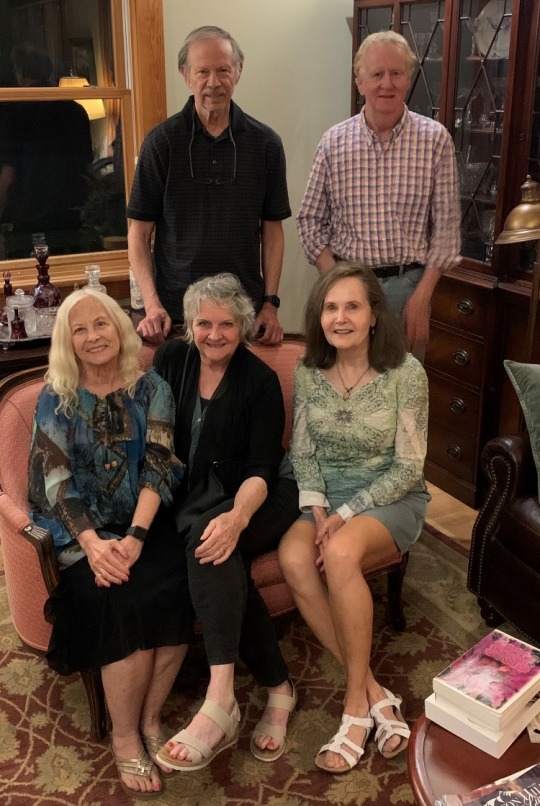
This evening we went to a potluck at our friends Barbara and Mark’s house in North Boulder. Our other friends, Shoni and Gary, were there too. Barbara, Shoni and I met MANY years ago at a Boulder Business and Professional Women’s meeting and have been friends ever since. Our husbands joined our friendship over the years. We had a tour of Barbara and Mark’s remodeled house and yard and we were lucky that the weather was good enough, at least at first, to eat outside. It did begin to rain when we were finishing so we went inside to have dessert there.
0 notes
Text
Events 5.23
1430 – Joan of Arc is captured at the Siege of Compiègne by troops from the Burgundian faction.
1498 – Girolamo Savonarola is burned at the stake in Florence, Italy.
1533 – The marriage of King Henry VIII to Catherine of Aragon is declared null and void.
1568 – Dutch rebels led by Louis of Nassau, defeat Jean de Ligne, Duke of Arenberg, and his loyalist troops in the Battle of Heiligerlee, opening the Eighty Years' War.
1609 – Official ratification of the Second Virginia Charter takes place.
1618 – The Second Defenestration of Prague precipitates the Thirty Years' War.
1706 – John Churchill, 1st Duke of Marlborough, defeats a French army under Marshal François de Neufville, duc de Villeroy at the Battle of Ramillies.
1788 – South Carolina ratifies the United States Constitution as the eighth American state.
1793 – Battle of Famars during the Flanders Campaign of the War of the First Coalition.
1829 – Accordion patent granted to Cyrill Demian in Vienna, Austrian Empire.
1844 – Báb: A merchant of Shiraz announces that he is a Prophet and founds a religious movement. He is considered to be a forerunner of the Baháʼí Faith.
1846 – Mexican–American War: President Mariano Paredes of Mexico unofficially declares war on the United States.
1863 – The General German Workers' Association, a precursor of the modern Social Democratic Party of Germany, is founded in Leipzig, Kingdom of Saxony.
1873 – The Canadian Parliament establishes the North-West Mounted Police, the forerunner of the Royal Canadian Mounted Police.
1900 – American Civil War: Sergeant William Harvey Carney is awarded the Medal of Honor for his heroism in the Assault on the Battery Wagner in 1863.
1905 – Sultan Abdul Hamid II publicly announces the creation of the Ullah millet for the Aromanians of the empire, which had been established one day earlier. For this reason, the Aromanian National Day is usually celebrated on May 23, although some do so on May 22 instead.
1907 – The unicameral Parliament of Finland gathers for its first plenary session.
1911 – The New York Public Library is dedicated.
1915 – World War I: Italy joins the Allies, fulfilling its part of the Treaty of London.
1932 – In Brazil, four students are shot and killed during a manifestation against the Brazilian dictator Getúlio Vargas, which resulted in the outbreak of the Constitutionalist Revolution several weeks later.
1934 – American bank robbers Bonnie and Clyde are ambushed by police and killed in Bienville Parish, Louisiana.
1934 – The Auto-Lite strike culminates in the "Battle of Toledo", a five-day melée between 1,300 troops of the Ohio National Guard and 6,000 picketers.
1939 – The U.S. Navy submarine USS Squalus sinks off the coast of New Hampshire during a test dive, causing the death of 24 sailors and two civilian technicians. The remaining 32 sailors and one civilian naval architect are rescued the following day.
1945 – World War II: Heinrich Himmler, head of the Schutzstaffel, commits suicide while in Allied custody.
1945 – World War II: Germany's Flensburg Government under Karl Dönitz is dissolved when its members are arrested by British forces.
1948 – Thomas C. Wasson, the US Consul-General, is assassinated in Jerusalem, Israel.
1949 – Cold War: The Western occupying powers approve the Basic Law and establish a new German state, the Federal Republic of Germany.
1951 – Tibetans sign the Seventeen Point Agreement with China.
1960 – A tsunami caused by an earthquake in Chile the previous day kills 61 people in Hilo, Hawaii.
1971 – Seventy-eight people are killed when Aviogenex Flight 130 crashes on approach to Rijeka Airport in present-day Rijeka, Croatia (then the Socialist Federal Republic of Yugoslavia).
1971 – The Intercontinental Hotel in Bucharest opens, becoming the second-tallest building in the city.
1992 – Italy's most prominent anti-mafia judge Giovanni Falcone, his wife and three body guards are killed by the Corleonesi clan with a half-ton bomb near Capaci, Sicily. His friend and colleague Paolo Borsellino will be assassinated less than two months later, making 1992 a turning point in the history of Italian Mafia prosecutions.
1995 – The first version of the Java programming language is released.
1998 – The Good Friday Agreement is accepted in a referendum in Northern Ireland with roughly 75% voting yes.
2002 – The "55 parties" clause of the Kyoto Protocol is reached after its ratification by Iceland.
2006 – Alaskan stratovolcano Mount Cleveland erupts.
2008 – The International Court of Justice (ICJ) awards Middle Rocks to Malaysia and Pedra Branca (Pulau Batu Puteh) to Singapore, ending a 29-year territorial dispute between the two countries.
2013 – A freeway bridge carrying Interstate 5 over the Skagit River collapses in Mount Vernon, Washington.
2014 – Seven people, including the perpetrator, are killed and another 14 injured in a killing spree near the campus of University of California, Santa Barbara.
2015 – At least 30 people are killed as a result of floods and tornadoes in Texas, Oklahoma, and northern Mexico.
2016 – Two suicide bombings, conducted by the Islamic State of Iraq and Syria, kill at least 45 potential army recruits in Aden, Yemen.
2016 – Eight bombings are carried out by the Islamic State of Iraq and Syria in Jableh and Tartus, coastline cities in Syria. One hundred eighty-four people are killed and at least 200 people injured.
2017 – Philippine President Rodrigo Duterte declares martial law in Mindanao, following the Maute's attack in Marawi.
2021 – A cable car falls from a mountain near Lake Maggiore in northern Italy, killing 14 people.
2021 – Ryanair Flight 4978 is forced to land by Belarusian authorities to detain dissident journalist Roman Protasevich.
2022 – Anthony Albanese of the Australian Labor Party is sworn in as the 31st Prime Minister of Australia after winning the 2022 Australian federal election, ending 9 years of conservative rule.
0 notes